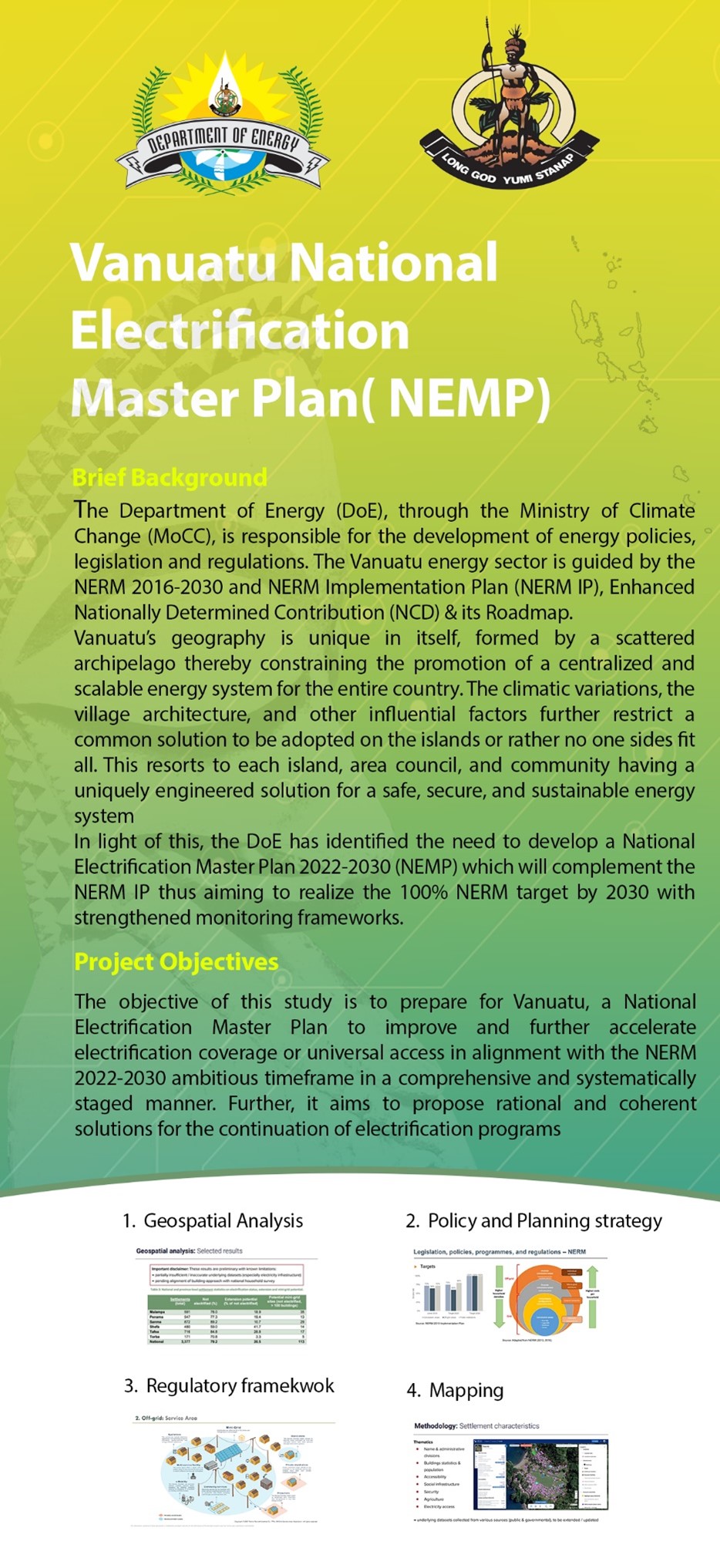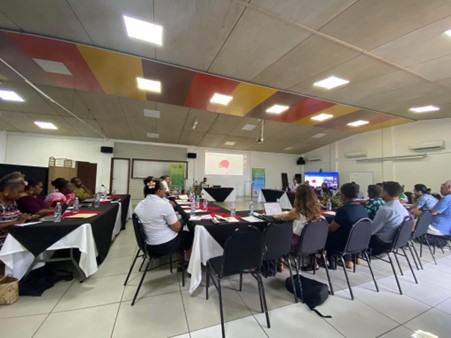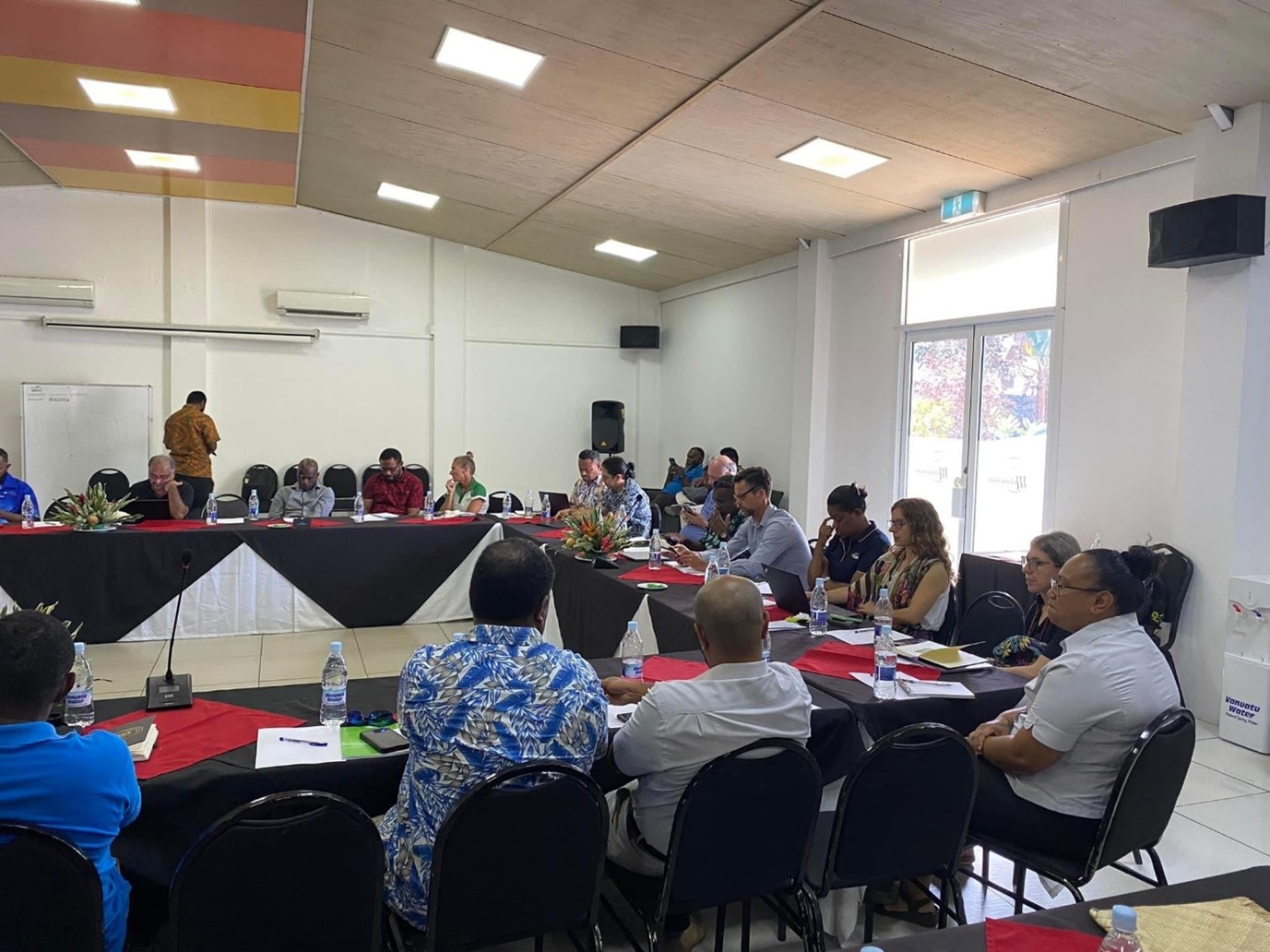The final workshop of the Vanuatu National Electrification Master Plan (NEMP) has been a success, with around 40 people attending the event in person from Port Vila, and over 20 people connecting virtually to a full morning dedicated to the country's electrification needs.
The audience included, among others, representatives from multiple government departments, the regulator, development partners, existing power utilities, the private sector, and training institutions. The NEMP’s objective is to offer a comprehensive and systematically staged plan to reach universal electrification in alignment with the National Energy Road Map (NERM) 2016-2030. The project has been coordinated by the Vanuatu Department of Energy (DoE) and funded by the New Zealand Ministry of Foreign Affairs and Trade (MFAT). It has been implemented by a consultancy consortium composed of Trama TecnoAmbiental (TTA) in collaboration with Economic Consultant Associates (ECA) and VIDA.
Initial remarks were shared by Ms. Holly Peacock, the second secretary of New Zealand’s High Commission, and Mr. Antony Garae, the director of the Department of Energy (DoE). Ms Peacock indicated the importance of energy as a catalyst for economic development and as important contributor to the Vanuatus National Sustainable Development Plan, as well as the relevant role of renewable energies in climate change mitigation and resilience. Mr. Garae, highlighted the importance of the NEMP as the way to implement and reach the ambitious targets in energy access of the National Energy Roadmap (NERM 2016-2030) and the National Sustainable Development Plan (NSDP) as well as the critical role of energy infrastructure for rural development.
The event was divided into three parts. First, the consultant presented all the geospatial work undertaken as part of the assignment. This included a nationwide least-cost electrification assessment to identify the most cost-effective way of bringing electricity to every household pending to be electrified in the country. One of the key products of the NEMP is a geospatial platform that presents the results in an online, interactive and user-friendly format. This platform integrates multiple layers of information, including education, health, and telecommunications infrastructure. This is one of the strengths of the NEMP, which aims to offer a platform to facilitate an inter-ministerial holistic approach to address rural development beyond electricity access.
According to the least-cost analysis, minigrids are the preferred electrification approach for 52% of the unelectrified customers, standalone PV solutions for 33%, and grid extension for 15%. Minigrids are the least-cost electrification approach for a total of 61 medium and large settlements in Vanuatu, which have estimated daily demands above 100kWh/day. It is estimated that an investment between 125 million USD and 160 million USD is needed to electrify the entire population of Vanuatu.
In the second part of the workshop, the consultant presented a comprehensive set of recommendations addressing legal, regulatory, economic, technical, social, and environmental aspects. These recommendations were presented in the format of an Implementation Plan, a list of concrete tasks needed to achieve universal access by 2030.

Some of these recommendations relate to the need to strengthen DoE as the owners of this process. These include: (i) the need to strengthen the off-grid team in terms of human resources, budget for fieldwork, and equipment and software, (ii) the need to promote the Vanuatu Joint Energy Sector Working Group to provide development partner coordination and also an inter-ministerial group to support holistic rural development; (iii) capacity building for government institutions.
In the third and last part of the workshop, some active electrification projects were presented as examples of the ongoing efforts by the Department of Energy in supporting rural electrification. Overall, it was concluded that the NERM objective of reaching universal access by 2030 is challenging and that only under a collaborative effort across ministries, with the due strengthening of the key stakeholders and the support from development partners, this will become a reality. Thanks to everyone who made this event possible.




